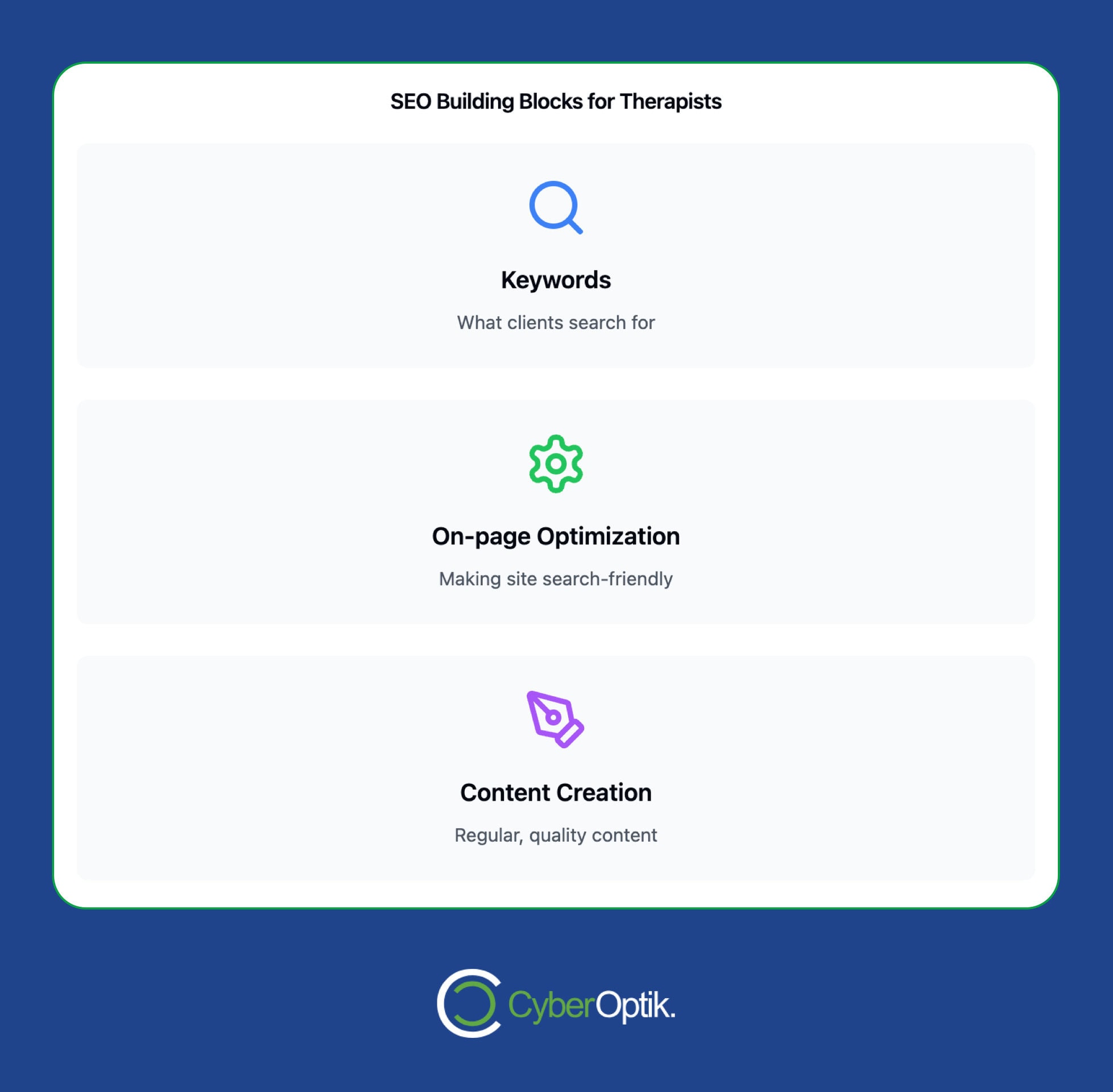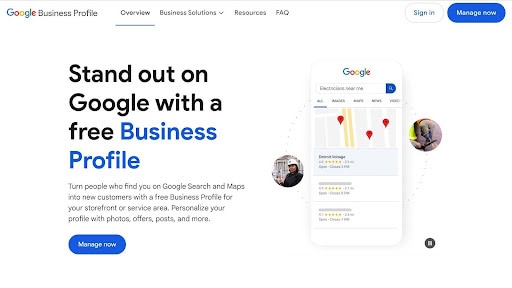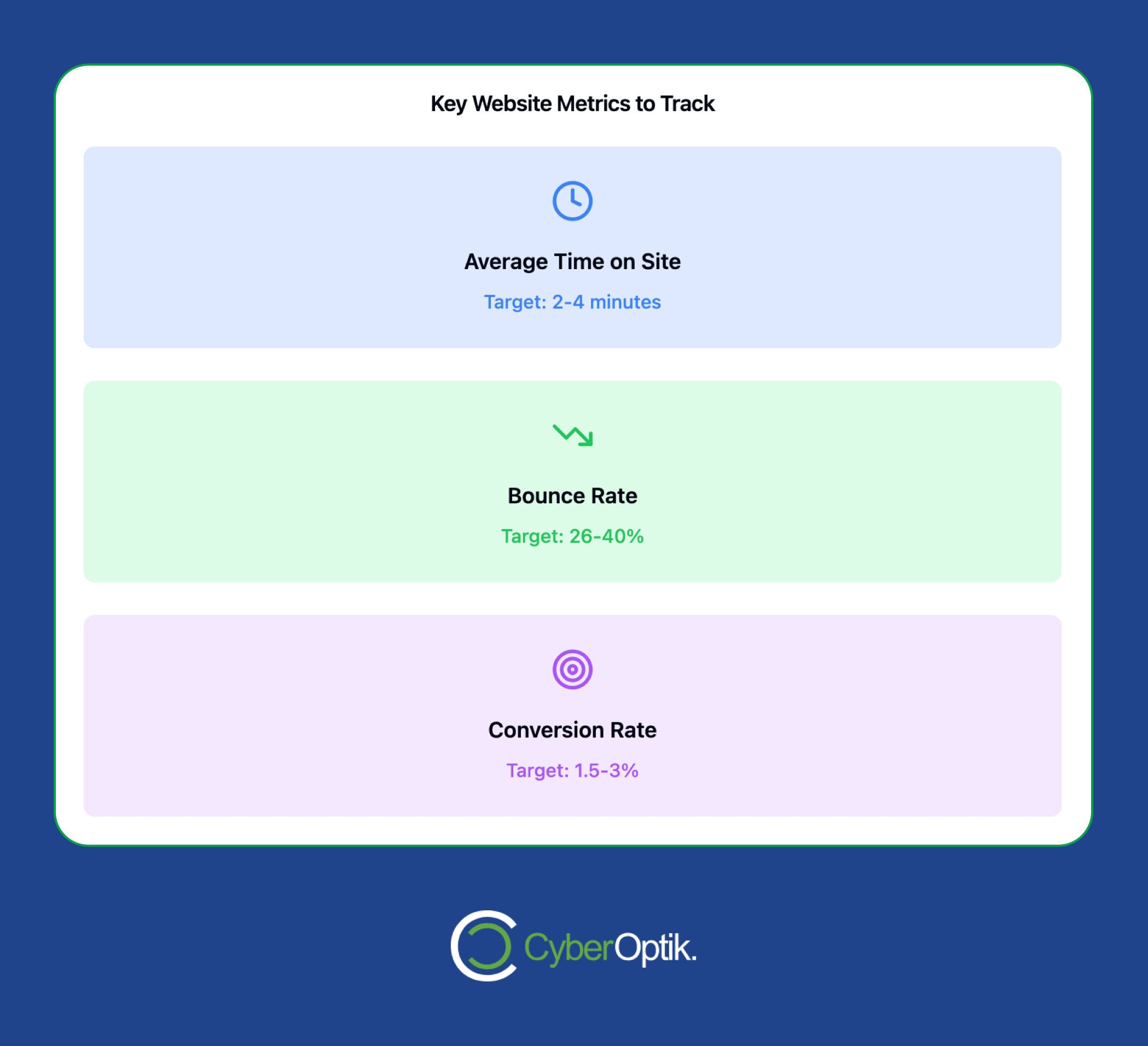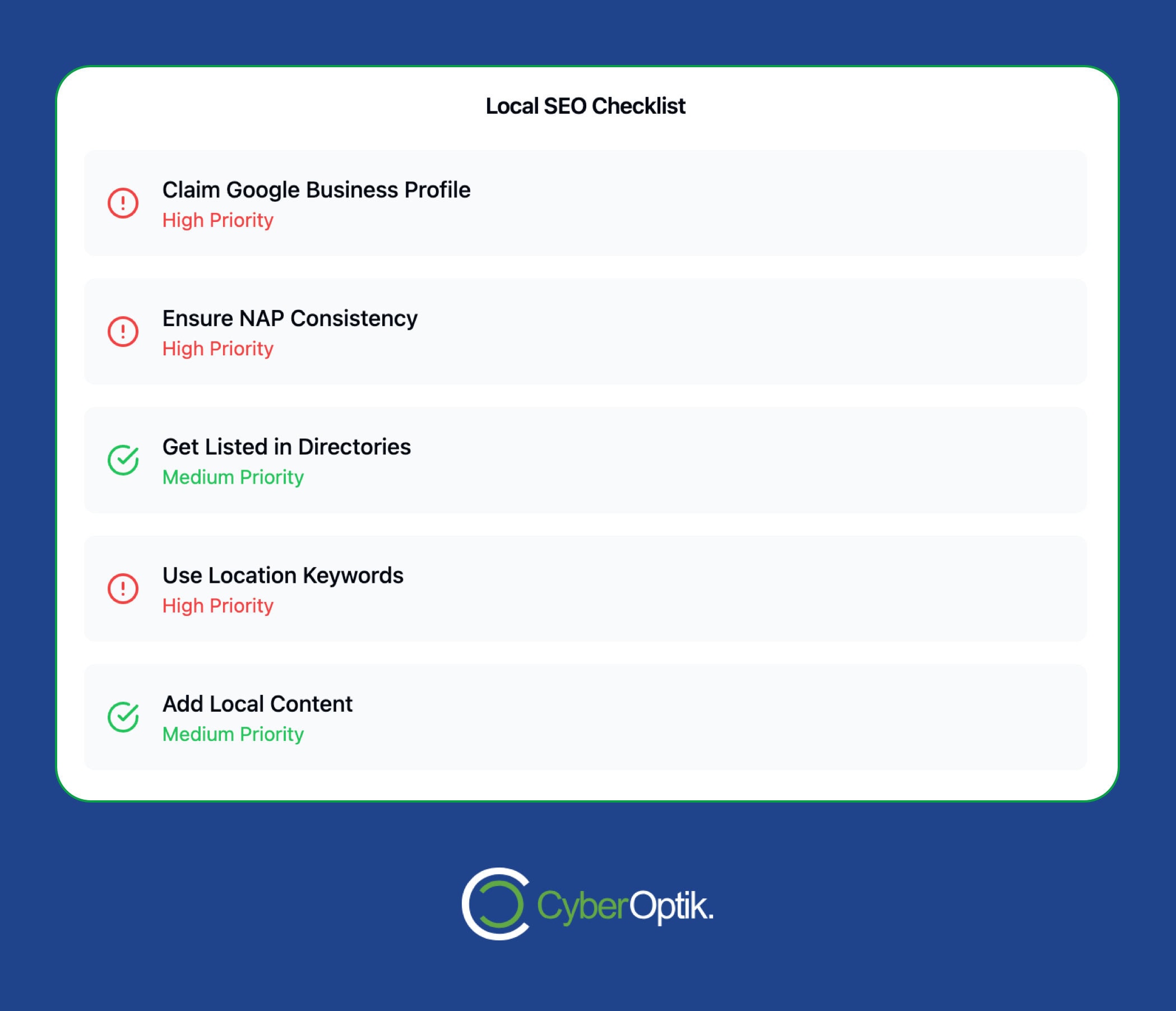Want more clients to find your therapy practice online? Here’s how to boost your website’s visibility:
- Nail the basics:
- Use relevant keywords
- Optimize page titles and descriptions
- Create helpful content
- Focus on local search:
- Set up Google Business Profile
- Ensure consistent contact info across the web
- Use location-specific keywords
- Make your site user-friendly:
- Organize content logically
- Ensure mobile responsiveness
- Improve loading speed
- Create valuable content:
- Write clear service pages
- Answer common client questions
- Showcase your expertise
- Track your progress:
- Monitor website traffic
- Measure conversion rates
- Check search rankings
Remember: SEO takes time. Start with one step and build from there. Your efforts will pay off as more potential clients discover your practice online.
SEO for Therapists Step 5: SEO for Mobile
SEO for Therapists Step 5: SEO for Mobile
SEO Basics for Therapy Websites
Want to connect with more clients online? SEO is your secret weapon. Let’s break down how to make your therapy website shine in search results.
SEO Building Blocks

Three key ingredients make up the SEO recipe for therapists:
- Keywords
- On-page optimization
- Content creation
Keywords are what potential clients type into Google. Think like your clients. They’re more likely to search “help with anxiety” than “psychologist.”
On-page optimization is about making your website search engine-friendly. Here’s how:
- Title tags: Keep ’em short and sweet. Example: “Anxiety Therapy in Edinburgh | Jane Smith, LMHC”
- Meta descriptions: Write a snappy summary. Like this: “Beat anxiety with personalized therapy in Edinburgh. Book with Jane Smith, LMHC today.”
- Header tags: Use H1, H2, and H3 to organize your content.
Content creation is the heavy hitter. Regular, high-quality content boosts your rankings AND builds trust with potential clients.
How Clients Search for Therapists
Understanding how clients look for help online is crucial. Here’s what we know:
- They use “near me” or location-specific terms
- They search for solutions to specific problems
- They use long, detailed phrases (called long-tail keywords)
Building Trust Through Content
Great content does double duty: it ranks well AND shows clients you know your stuff. Here’s how to nail it:
- Show off your expertise
Write about what you know best. Specialize in couples counseling? Try topics like “5 Ways to Supercharge Your Relationship Communication” or “Rebuilding Trust After an Affair: A Step-by-Step Guide.”
- Answer common questions
Address the stuff clients are nervous to ask. It helps with SEO and puts minds at ease.
- Write like you talk
Ditch the jargon. Write like you’re chatting with a friend over coffee.
- Share success stories
Got permission? Share anonymous case studies. It shows potential clients what’s possible.
- Keep it fresh
Google loves new content. Aim to add or update something at least once a month.
Famous Erwin, LMHC, puts it perfectly:
“By consistently creating and updating content that resonates with the target audience, those results can strengthen your online presence and make you a go-to resource in the field of therapy.”
Implementing these SEO basics takes some elbow grease, but the payoff for your practice can be huge. Ready to get started?
Local Search Rankings
Want more local clients? You need to nail your local search rankings. Here’s how to make your therapy practice pop up when people in your area are looking for help.
Google Business Profile: Your Digital Storefront

First things first: set up your Google Business Profile (GBP). It’s like your online business card, but way more powerful.
- Claim and verify your listing
Head to google.com/business and make it official.
- Fill it out. All of it.
Name, address, hours, services – leave no field empty.
- Show off your space
Add high-quality pics of your office and team.
- Speak their language
Use words in your description that match what potential clients are searching for.
Keep your GBP fresh. Add updates, posts, and tweak your keywords. Google loves active profiles.
NAP Consistency: It’s Not Just for Sleeping
NAP stands for Name, Address, and Phone number. Why does it matter? Because:
- Search engines use it to check if you’re legit
- Mixed-up info confuses potential clients (and Google)
Do this now: Go through your entire online presence. Make sure your NAP is EXACTLY the same everywhere – your website, social media, directories, everywhere.
Get Listed: Be Where Your Clients Are Looking
Get your practice on relevant directories. Some good ones:
Don’t go crazy trying to be on every list out there. Focus on the ones that matter for mental health services.
Location, Location, Location (Keywords)
Sprinkle location-specific keywords throughout your website. Like:
- “Anxiety therapist in Houston”
- “Couples counseling near downtown Chicago”
- “Depression treatment in San Francisco Bay Area”
Use these naturally in your content, service pages, and meta descriptions. It tells search engines, “Hey, we’re right here, ready to help!”
Yes, this takes work. But it’s worth it. As SEO Specialist Cory Moss puts it:
“Simply put, getting to the top of Google helps you reach more clients and provide them with high-quality mental health services.”
Get these local SEO basics right, and you’ll be well on your way to connecting with more clients in your community.
Website Technical Setup
Let’s get into the nitty-gritty of making your therapy website work better for users and search engines. A well-tuned website can be a game-changer in attracting and keeping clients.
Website Organization
Think of your website as your digital office. You want it tidy and easy to navigate, right? Here’s how to do it:
Keep your menu simple. Stick to the essentials: “About”, “Services”, “Contact”, and “Blog.”
Use clear labels. Ditch “Our Offerings” for “Therapy Services.”
Group related pages logically. Use dropdown menus if you need to.
A clean structure isn’t just for visitors – search engines eat it up too. As Christian Cevallos, a Mental Health SEO Specialist, puts it:
“Client privacy and data security should be your top priorities.”
Speaking of priorities…
Making Your Site Work on Phones
Get this: 95% of Americans use a smartphone. Your website NEEDS to look good on small screens. Here’s how:
Use responsive design. It’s like magic – your site adjusts to any screen size.
Make buttons and links finger-friendly. Aim for 44×44 pixels minimum.
Use readable fonts. No squinting allowed!
Test it out. Google’s mobile-friendly tool is your friend here.
Making Your Site Load Faster
Slow websites are like waiting rooms with uncomfortable chairs – people leave. Speed it up:
Optimize images. Compress without sacrificing quality.
Enable browser caching. It’s like giving visitors’ devices a cheat sheet for your site.
Cut down HTTP requests. Less stuff to load = faster page.
Website Security Basics
For therapy websites, security isn’t optional – it’s a MUST. Lock it down:
Use HTTPS: It’s like a secret code between your site and visitors’ browsers. Many hosts offer free SSL certificates.
Install a security plugin: It’s your website’s bouncer. Wordfence and Sucuri are solid choices.
Enable two-factor authentication (2FA): It’s like adding a second lock to your door.
Regular backups: Always have a Plan B for your site.
Jen Swisher, Customer Experience Specialist for Jetpack, nails it:
“Keeping WordPress, plugins, and themes updated is crucial to protect against vulnerabilities.”
Writing Content That Works
Creating content for your therapy website isn’t just about pleasing search engines. It’s about connecting with real people who need your help. Let’s explore how to write content that resonates with potential clients and boosts your SEO.
Writing Better Service Pages
Your service pages are key. They need to clearly explain what you offer while ranking well in search results. Here’s how:
- Speak their language
Use words your clients use. Instead of “cognitive behavioral therapy”, try “help for negative thoughts.” Wyatt Megla puts it well:
“Even more important than knowing what Google wants from your website’s content, is knowing what your ideal client will relate with.”
- Show, don’t tell
Instead of saying “I’m experienced in anxiety treatment”, try:
“I’ve helped over 200 clients overcome debilitating anxiety and reclaim their lives in the past 5 years.”
- Make it skimmable
Break up your content with headers, short paragraphs, and bullet points. Only about 16% of visitors read an entire webpage, so make it easy to scan.
Pages for Different Types of Therapy
Create separate pages for each therapy type you offer. This approach:
- Helps potential clients find what they need
- Gives you more chances to rank for specific keywords
- Allows you to dive deep into each therapy type
For example, if you offer couples and individual therapy, create two distinct pages. On your couples therapy page, include:
- Common relationship issues you address
- Your approach to couples counseling
- What couples can expect in a session
- Success stories (anonymized, of course)
Helpful Information for Clients
Your website should be a valuable resource, not just a sales pitch. Consider adding:
- FAQs
Answer common questions like “How long does therapy usually last?” or “What’s the difference between a therapist and a psychiatrist?”
- Blog posts
Write about mental health topics relevant to your ideal clients. For example, “5 Simple Techniques to Manage Anxiety at Work” or “How to Support a Loved One with Depression.”
- Free resources
Offer downloadable worksheets, guided meditations, or e-books. This builds trust and showcases your expertise.
Showing Your Qualifications
While your “About Me” page is crucial, weave your qualifications throughout your site:
- Credentials: Clearly list your degrees, certifications, and licenses.
- Experience: Mention your years of practice and any specialized training.
- Approach: Explain your therapy style simply. What can clients expect in a session with you?
- Testimonials: If possible, include anonymous testimonials from past clients (with their permission).
- Professional photos: A high-quality, friendly photo of yourself can build trust.
Tracking Results
You’ve optimized your therapy website. Now what? Let’s look at how to measure if it’s working.
What Numbers to Watch
Keep an eye on these key metrics:
- Traffic: Where are your visitors coming from? Check organic, social, direct, and referral sources.
- Average Time on Site: Aim for 2-4 minutes. If it’s much lower, something’s off.
- Bounce Rate: You want 26-40%. Above 50%? Time to make changes.
Conversion Rate: This shows how many visitors take action, like booking appointments

As Amanda Weber from Brighter Vision says:
“Without metrics, it’s impossible to know if your website is succeeding or not.”
Measuring New Client Sign-ups
Here’s how to track visitors becoming clients:
- Set up Goal Tracking
Use Google Analytics to track specific actions, like appointment bookings.
- Monitor Your Conversion Rate
For therapy websites, 1.5-3% is good. Below 1%? Room for improvement.
- Track Phone Calls
Don’t forget about call tracking. Some people still prefer to pick up the phone.
Allison Pentony, a marketing expert, puts it this way:
“Just like patient volume determines if your marketing is working, Conversion rate determines your website’s effectiveness.”
Checking Search Rankings
Want to know where you show up in search results? Here’s how:
- Use Google Search Console to see where you rank for different keywords.
- Track important phrases like “anxiety therapist in [your city]”.
- Look for gradual improvements over time. SEO isn’t an overnight fix.
Why does this matter? 75% of people don’t go past the first page of search results.
Calculating SEO Value
Is SEO worth it? Let’s do the math:
- Compare SEO costs to new client revenue.
- Think long-term. One client could be worth thousands over time.
- Don’t forget about building your reputation as an expert.
Rod Solar from LiveseySolar Practice Builders adds:
“A low conversion rate typically results from having ineffective or untrained staff handle inquiries from prospective patients.”
So make sure your whole team understands these metrics and how to improve them.
Next Steps
You’ve got the lowdown on making your therapy website shine in search results. Let’s get moving with these key actions:
Optimize Your Homepage
This week, give your homepage’s title tag a quick makeover. Make it snappy and include what you do and where. Like this:
“Anxiety & Depression Therapy in Chicago | Jane Smith, LCSW”

Claim Your Google Business Profile
This free tool is a must for local visibility. Here’s what to do:
- Add your correct business details
- Write a killer description of your therapy services
- Upload some great office photos
- Post regularly about mental health topics
Create Targeted Content
Pick a common client issue and write a meaty blog post about it (shoot for 1,500+ words). Use Google’s Keyword Planner to find good keywords that aren’t too competitive.
Improve Technical SEO
Got WordPress? Install a caching plugin like W3 Total Cache. It’s an easy way to speed up your site.
Build Authority
Jump on HARO (Help a Reporter Out) and start sharing your expertise with journalists. It’s a great way to get quality backlinks and boost your cred.
Remember, SEO isn’t a quick fix. It takes time and consistency. As digital marketing pro Erica Julson puts it:
“Figure out which of these tips you’re not already doing and then go take action this week to see some improvements in your website and search engine optimization.”
So, which step will you tackle first?



